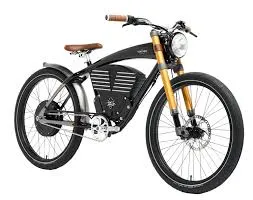
- Afrikaans
- Albanian
- Amharic
- Arabic
- Armenian
- Azerbaijani
- Basque
- Belarusian
- Bengali
- Bosnian
- Bulgarian
- Catalan
- Cebuano
- Corsican
- Croatian
- Czech
- Danish
- Dutch
- English
- Esperanto
- Estonian
- Finnish
- French
- Frisian
- Galician
- Georgian
- German
- Greek
- Gujarati
- Haitian Creole
- hausa
- hawaiian
- Hebrew
- Hindi
- Miao
- Hungarian
- Icelandic
- igbo
- Indonesian
- irish
- Italian
- Japanese
- Javanese
- Kannada
- kazakh
- Khmer
- Rwandese
- Korean
- Kurdish
- Kyrgyz
- Lao
- Latin
- Latvian
- Lithuanian
- Luxembourgish
- Macedonian
- Malgashi
- Malay
- Malayalam
- Maltese
- Maori
- Marathi
- Mongolian
- Myanmar
- Nepali
- Norwegian
- Norwegian
- Occitan
- Pashto
- Persian
- Polish
- Portuguese
- Punjabi
- Romanian
- Russian
- Samoan
- Scottish Gaelic
- Serbian
- Sesotho
- Shona
- Sindhi
- Sinhala
- Slovak
- Slovenian
- Somali
- Spanish
- Sundanese
- Swahili
- Swedish
- Tagalog
- Tajik
- Tamil
- Tatar
- Telugu
- Thai
- Turkish
- Turkmen
- Ukrainian
- Urdu
- Uighur
- Uzbek
- Vietnamese
- Welsh
- Bantu
- Yiddish
- Yoruba
- Zulu
Nov . 04, 2024 20:09 Back to list
cycle electric price
Understanding Cycle Electric Prices A Comprehensive Overview
In recent years, the cycling industry has witnessed a significant shift towards electric bicycles (e-bikes), gaining immense popularity among both urban commuters and outdoor enthusiasts. As the demand for e-bikes surges, understanding the implications of cycle electric prices becomes crucial for consumers, manufacturers, and policymakers alike. This article delves into various factors influencing electric bike pricing, the benefits of e-bikes, and the future trends that could further shape the market landscape.
Factors Influencing Electric Bike Prices
One of the primary determinants of electric bike prices is the type of components used in their construction. High-quality batteries, motors, and frames all contribute significantly to the overall cost. For example, e-bikes equipped with lithium-ion batteries tend to be pricier than those with lead-acid batteries due to their increased energy density and longevity. Additionally, the motor's power and type (hub motor versus mid-drive motor) can also impact the price, with mid-drive systems typically offering better performance and efficiency but at a higher cost.
Another important aspect is brand reputation and customer service. Established brands with a solid reputation often charge premium prices, reflecting their commitment to quality, warranty service, and customer support. Emerging brands, while potentially offering competitive prices, may not provide the same level of assurance in terms of durability and after-sales service.
The region where e-bikes are manufactured and sold can also play a significant role in determining prices. For instance, e-bikes produced in countries with lower labor costs may be more affordable. In contrast, models manufactured in regions with stringent regulations regarding labor and materials might carry higher price tags due to compliance costs. Consequently, understanding the origin of an electric bike can provide consumers with insights into its pricing.
The Benefits of Electric Bicycles
cycle electric price

Despite the variations in pricing, the benefits of e-bikes justify the investment for many riders. One major advantage is the ease of commuting, particularly in urban settings where traffic congestion is common. E-bikes offer an efficient alternative to traditional vehicles, allowing users to navigate through traffic more easily while reducing their carbon footprint. This eco-friendliness aligns with the growing global emphasis on sustainable transportation solutions.
Furthermore, electric bikes also promote physical activity by encouraging people to cycle who may not otherwise do so due to perceived exertion levels. With pedal-assist technology, riders can customize their effort, making cycling more accessible for people of varying fitness levels and ages. This encourages a broader demographic to engage in outdoor activities, ultimately contributing to healthier communities.
Future Trends in Electric Bike Pricing
As the market evolves, several trends are poised to influence electric bike pricing in the coming years. Firstly, advancements in technology are likely to lead to better battery performance and reduced production costs, which could translate to more affordable price points for consumers. Additionally, as e-bike adoption continues to rise, economies of scale may kick in, further driving down prices while increasing accessibility.
Another promising trend is the growing focus on sustainable materials and manufacturing processes. As consumers become more environmentally conscious, brands that prioritize sustainability may command a premium price. However, this could also lead to more competitive pricing models as manufacturers innovate to reduce costs and environmental impact.
Conclusion
Understanding cycle electric prices is essential for consumers looking to invest in an e-bike, as well as for manufacturers aiming to navigate a competitive market. Various factors, including component quality, brand reputation, and regional production influences, all play a role in determining costs. Moreover, as awareness of the environmental and health benefits of electric bikes grows, the market is expected to expand, leading to technological advancements and potential price reductions. Ultimately, e-bikes represent a promising shift towards sustainable urban transport, making them a valuable investment for the future.
-
The Ultimate Kids' Four-Wheeler Experience
NewsJul.09,2025
-
The Ultimate Guide to Mountain Bikes: Gear Up for Your Ride
NewsJul.09,2025
-
The New Age of Cycling: Electric Bikes for Every Rider
NewsJul.09,2025
-
The Best Kids Bicycles: Ride in Style and Safety
NewsJul.09,2025
-
The Best 3-Wheel Scooters for Kids: Fun, Safety, and Adventure
NewsJul.09,2025
-
Revolutionize Your Ride: Affordable Electric Bikes
NewsJul.09,2025
-
Finding the Perfect Mountain Bike for Every Rider
NewsJul.09,2025



